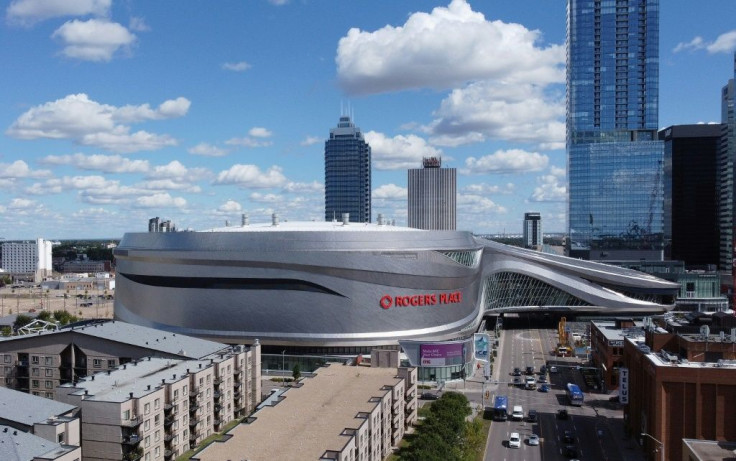How The NHL Took Control of COVID-19

The coronavirus pandemic has demanded changes to many parts of life, and sports is no exception.
We’ve already covered the “NBA bubble” and its supporting technology, but basketball isn’t the only sport that was able to reopen. The National Hockey League (NHL) designed its own plan to create a safe environment for players and staff, and we’re going to explore those efforts and how they compared to those of the National Basketball Association (NBA).
The Bubbles
The NHL season was partially underway when leaders chose to press pause, as official bans were placed on large-scale gatherings. After consulting medical experts and local authorities, the league crafted a 4-phase “Return To Play Plan.” Daily health screenings were implemented, and the number of people that players and their support staff encountered was gradually reduced, easing them into the tightly controlled environment that would allow the season to restart.
Instead of creating one bubble, like the NBA, the NHL chose to have two “hub city” complexes, one in Edmonton and the other in Toronto. The league set up all-inclusive “secure zones,” which included hotels, restaurants, practice facilities and the arenas where the games would be played. Tight security measures kept these campuses isolated from the world at large.
Inside the bubble, COVID-19 testing and health screenings were performed daily. Throat and nasal swabs were used on alternating days to obtain more comprehensive results. The NHL contracted two private laboratories, DynaLIFE Medical Labs in Edmonton and LifeLabs Medical Laboratory Services in Toronto, to handle testing, without reducing availability to local governments and the general public. Dedicated on-site medical staff handled the testing process, as well as other medical issues within the bubble.
The Tech
Rather than relying on gadgets like the NBA’s smart rings and contact-tracing tiles, the NHL plan centered on traditional access controls like fencing and security staff, alongside a single, health-screening app from CLEAR. You may recognize the name from airports, where CLEAR services ease travelers through TSA security checkpoints.
Health Pass is a new feature that was introduced on the CLEAR app earlier this year. Health Pass includes a survey to self-report the user’s health status, temperature logging that can be entered manually or through connected hardware, and optional connections to lab accounts. The end result is a QR code that generates a simple red or green rating when scanned at an entry point. The user’s photo is also stored and displayed for identity verification.
CLEAR’s ambitions expand far beyond the NHL bubble. Health Pass is intended to be a general-purpose solution that can be implemented at any business or venue. The company expects to have it deployed at stadiums, airports, restaurants and more in the near future. New features, such as direct integration of LabCorp and Quest Diagnostics COVID-19 testing, are being added as development continues.
Still curious about how it all works? CLEAR has posted an animated guide to Health Pass on its YouTube channel.
The Experience
We don’t have to look far to understand what life was like inside the NHL bubbles. Players haven’t been shy about their feelings, and there was a dedicated blog on the NHL website.
"They've done a really good job of making it convenient for the players,” Arizona Coyotes forward Derek Stepan told Tom Gulitti, a sportswriter for NHL.com. “It takes a total of 20 seconds to do the entire app. It's crazy technology. I don't understand it. I'm not going to try to figure it out [sic] what's going on there, but it's pretty cool that they're able to do that."
Of course, testing isn’t a be-all and end-all solution. Jamie Hacker, the NHL associate counsel in charge of testing, told Mr. Gulitti, “The testing is just a bonus because the testing will identify if there is going to be an infection and we can stop a spread from happening. But what's really more important is the fact that people take personal responsibility for their practices on a day-to-day basis and their interactions."
The NHL was strict in making sure that personal responsibility was met. Anonymous players speaking to the New York Post relayed stories of “mask police everywhere” and a prison-like fence separating the bubble from the rest of the world. In exchange, the players were confident that the league had them protected as well as possible. “It was one of the safest places you could be. They were constantly checking your credentials, constantly checking our Clear App, constant security.”
The Results
Although there were positive tests in earlier phases of the season, both hub city campuses emerged from the season with no cases of COVID-19 reported.
The Take Home
Fighting the spread of COVID-19 is incredibly difficult, and bubble campuses have proven to be one of the most effective approaches for getting industries back to work. They offer a stark reminder that COVID-19 containment is possible with the right level of testing, compliance and restrictions on travel and gatherings.
Sean Marsala is a health writer based in Philadelphia, Pa. Passionate about technology, he can usually be found reading, browsing the internet and exploring virtual worlds.
Published by Medicaldaily.com



























